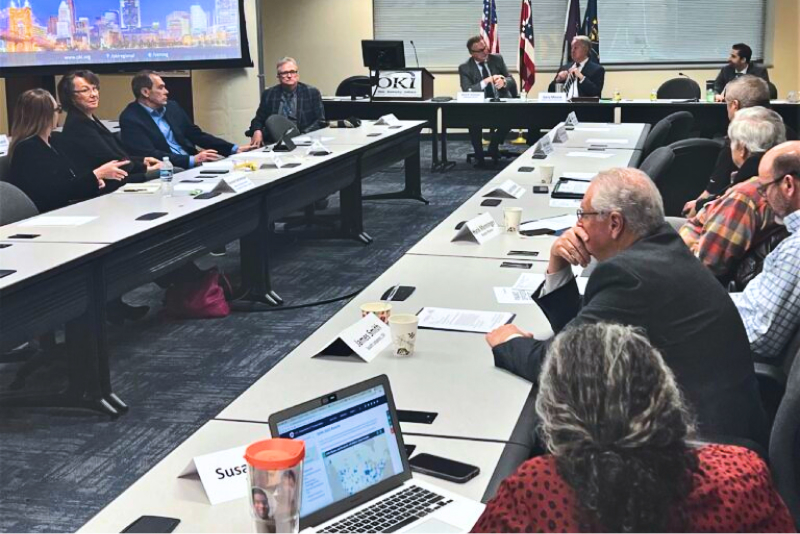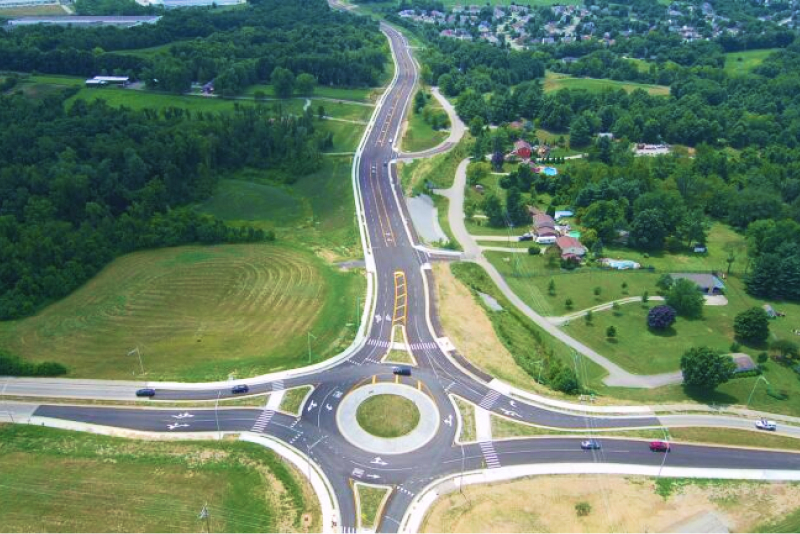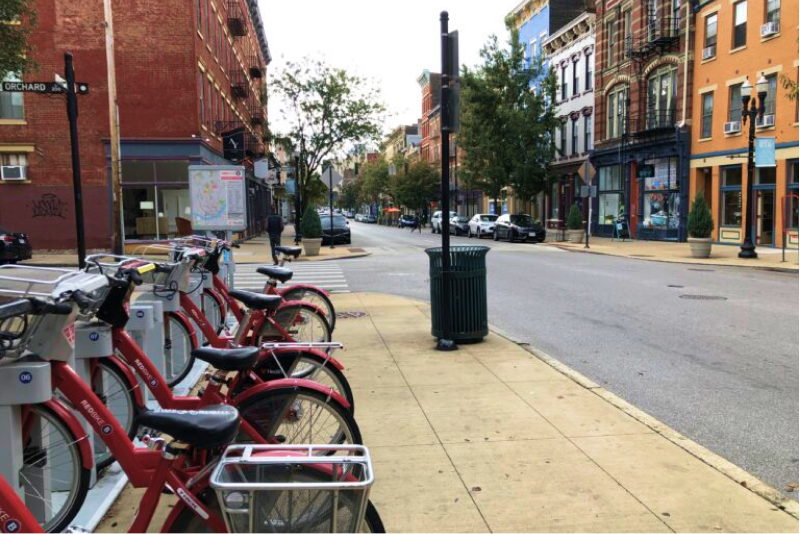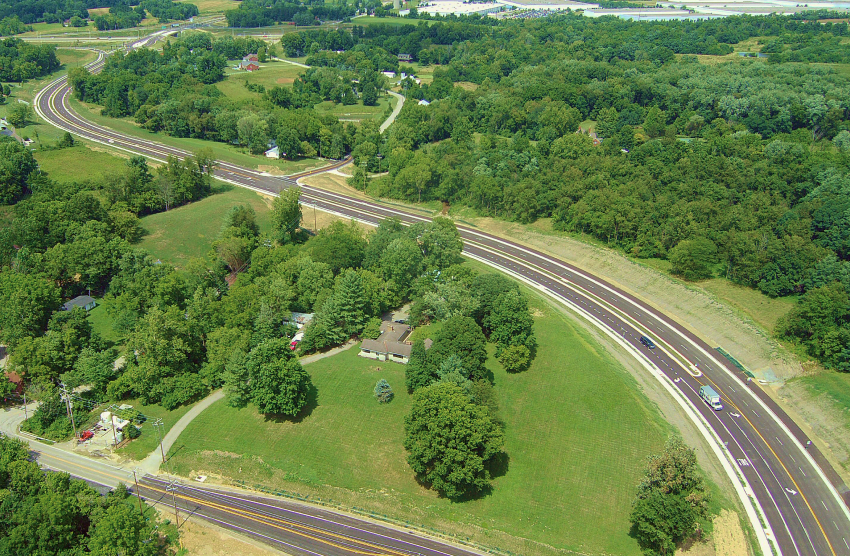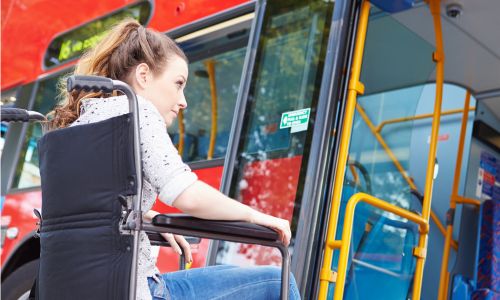What is Greenspace?
OKI works eagerly to promote and assist greenspace conservation throughout the region.
Greenspace is land in an undeveloped or restored natural state. It is also land designated as parks, recreational areas, working lands, or open spaces with green infrastructure. While both improving citizens’ quality of life and conserving ecosystem benefits, greenspace adds economic value to communities by reducing costs from environmental damage. Connectivity is critical for increasing greenspace value. This makes it necessary for OKI and partners to work together to conserve greenspace throughout the region.
OKI Promotes the Conservation of Greenspace Through:
- Integrating environmental considerations into all aspects of the transportation planning process
- Supporting the conservation of significant environmental resources through collaborative efforts, like Green Umbrella and Taking Root
- Implementing OKI’s Strategic Regional Policy Plan (How Do We Grow From Here?) recommendations for conserving natural systems and incorporating greenspace into the development process
Online Mapping Applications
Environmental Resources Viewer

The Environmental Mitigation and Suitability Modeler (EMSM)
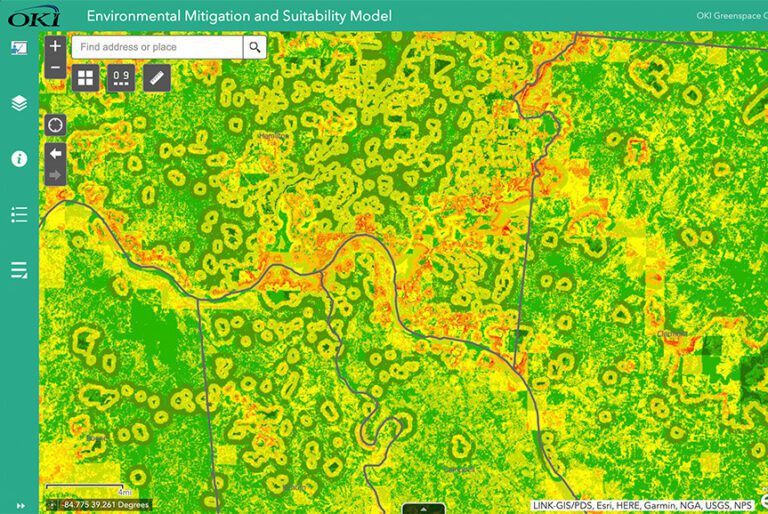
Environmental Consultations
Environmental consultations open new insights into the transportation planning process. They help reduce negative environmental impacts and lower transportation and development costs. A deeper understanding of the dynamics between transportation and greenspace can provide ideas. It can also expand transportation opportunities to advance sustainable development.
"Interest in conserving natural resources is increasing because of the economic angle — protection is in the interest of the pocketbook. The cost of replacing or restoring natural resources should make it a no-brainer to see the need to protect them."
Local Agency Participant, OKI Environmental Consultations
About the Environmental Consultation Reports
Federal rules require that MPOs hold environmental consultations that compare transportation plans with identified protected environmental resources. To abide by these requirements, OKI’s reports on environmental consultations in our regional transportation planning initiatives include:
- Maps and data on the region’s most significant (and least impaired) environmental resources
- Insights from local and state agencies on how to better protect environmental resources from transportation and development impacts
- Suggestions for reducing project-level impact and cumulative effects of transportation and development
Important Topics Within the Reports
- Regionally significant environmental resources
- Environmental resources that are considered regionally significant include:
- Resources targeted for conservation/protection in state policy and regulations
- Resources that help protect state investments
- High-quality or rare resources
- Resources that help sustain other high-quality or rare resources
Applicable Strategies
Further transportation improvement and environmental protection strategies include:
- Better overall planning
- Increased use of low-impact development and green infrastructure for reducing stormwater impacts
- Integration of best practices into development codes
- A conservation element implemented in local comprehensive plans
- Increased use of conservation easements
Major Environmental Concerns
The main environmental concerns identified throughout the region include:
- Forested tracts remain intact
- Stream corridors are conserved
- Roadway runoff be diverted from direct entry into streams
- Streams that are not yet degraded should be protected
- The growth of impervious surfaces should be constrained
Eco-Logical Approach & Advanced Mitigation
What is the Eco-Logical Approach?
The eco-logical approach lays the groundwork for agencies, government institutions and organizations to collaborate on developing an integrated eco-logical framework. This framework results in a systematic 8-step national resource identification, avoidance, minimization, and mitigation process. The Eco-Logical: An Ecosystem Approach to Developing Infrastructure Projects guide was developed by a team of representatives from eight federal agencies and the Department of Transportation.
This guide describes a landscape-scale, ecosystem approach for planning and developing infrastructure projects that:
- Bring together resources, infrastructure, and regulatory agencies to form strong partnerships
- Incorporate natural resource and infrastructure data for use in the mitigation, conservation and planning
- Allow agencies to establish joint priorities

Recognized IAP Early Adopter!
OKI has been recognized as an early adopter of the Eco-Logical Implementation Assistance Program (IAP) by the Federal Highway Administration (FHWA). OKI’s integration between advanced mitigation planning efforts and state natural heritage endangered species data was featured in the Eco-Logical 2015/2016 Annual Report.
What is Advanced Mitigation?
A relatively new term created by the FHWA — Advance Mitigation — refers to determining significant possible environmental impacts early in the planning process. This helps determine the best possible plan for where and how to proceed with a project.
Greenspace Partnership
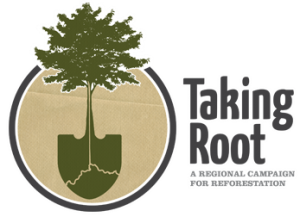
Taking Root
Taking Root addresses the local tree crisis by planting trees and managing forested areas across the OKI region. The nonprofit organization has provided more than 320,000 trees throughout our tristate communities.
Tree for Me
OKI partnered with Taking Root on developing Tree for Me, an online tool to help individuals, communities, parks, and municipalities manage tree distribution campaigns. Users can also use Tree for Me to calculate the benefits of planting a tree in a residential or business location you specify.
Help Our Tree Canopy Thrive
Visit Taking Root to learn more about the crisis confronting our trees and forests. You’ll also learn how you, your community, and your organization can join with OKI and our partners to help address Taking Root’s goals.
Taking Root History
The Taking Root campaign started in 2013 as a collaboration with OKI, the Cincinnati Zoo & Botanical Gardens, Green Umbrella, and the Green Partnership of Greater Cincinnati. The group’s goal: to address the local tree crisis by planting trees and managing forested areas across the region. In 2016, Taking Root Campaign became an independent, non-profit organization.
